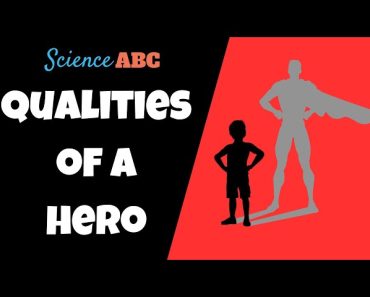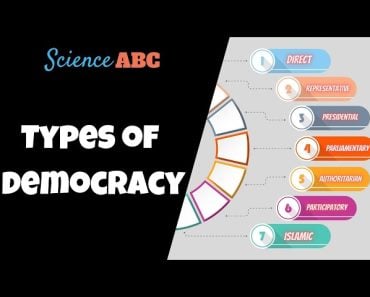People commonly confuse democracy and republicanism due to historical misunderstandings and semantics. However, the two are fundamentally different.
In the realm of political discourse, the terms “democracy” and “republic” are often used interchangeably. However, their historical origins and philosophical foundations reveal significant differences. In the United States, the distinction between the two has significant implications for governance and the protection of individual liberties.
While democracy emphasizes the rule of the majority and direct participation, republicanism prioritizes the rule of law, individual rights, and limited government. Understanding the nuances between these two forms of governance is essential for safeguarding the principles upon which nations are built.
Recommended Video for you:
Historical Developments Around Republic And Democracy
The historical roots of these concepts further underscore their differences. While democracy traces its origins to ancient Greece, where citizens participated directly in decision-making, republicanism finds its roots in the Roman Republic, where the rule of law and civic virtue were esteemed.

Over time, the concepts evolved, with democracy often being associated with populism and majority rule, while republicanism emphasized the importance of institutions, checks and balances, and the protection of individual rights. The revival of republicanism was most keenly felt in the USA.
The Founding Fathers of the United States deliberately crafted a republican form of government, enshrined in the Constitution, to mitigate the perceived dangers of unchecked democracy. They were keenly aware of the pitfalls of mob rule and sought to establish a system that would protect individual freedoms, while promoting the common good. As such, the United States is often referred to as a republic, rather than a pure democracy.
Distinctions Between Democracy And Republic
One of the key differences between democracy and republicanism is their approach to governance and the role of law. In a democracy, power is vested in the majority, and decisions are made through direct or representative means without strict adherence to a fixed body of law. Laws can change based on prevalent sentiments and interests, leading to a system where individual rights may be subordinated to the will of the majority.

On the other hand, a republic is defined by the rule of law, where legal principles are paramount and provide a framework for governance. The Constitution is the supreme law of the land, restraining the powers of government and protecting individual rights from infringement by the majority. Under a republican system, government officials are bound by legal constraints and are accountable to the rule of law, rather than popular sentiment.
Contemporary Implications And Global Debates
Although democracies and republics can be features of the same state, as is the case in India, the use of the terms have evolved to denote specific political arguments that may not co-exist.
The tension between democracy and republicanism is not merely theoretical, but has practical implications for governance and society. Proponents of democracy argue for greater equality and inclusivity, advocating for direct participation and the empowerment of the majority. However, critics caution against the tyranny of the majority and the potential erosion of individual freedoms in pursuit of egalitarian ideals.

On the other hand, advocates of republicanism emphasize the importance of legal constraints, institutional stability, and the protection of minority rights. They argue that a republican form of government provides a bulwark against the excesses of democracy (such as the tyranny of the majority) and ensures the preservation of individual liberties amidst shifting political winds.
Balancing Act: Navigating Dynamics In Governance
In the contemporary context, the debate between democracy and republicanism continues to shape political discourse and policy decisions. Efforts to enhance democratic participation and promote social equality must be balanced against the need to maintain constitutional safeguards and protect individual freedoms.
The challenge lies in striking the right balance between popular sovereignty and the rule of law, ensuring that governance remains responsive to the people, while still upholding the principles of justice and liberty.
Why The Confusion Between Republic And Democracy?
The confusion between democracy and republicanism is widespread and arises from historical misinterpretations, semantic evolution, and educational oversights. While the founders of various nations might have understood the distinctions between these forms of government, the modern usage of the terms has become increasingly interchangeable.

This blurring of lines is further exacerbated by semantic evolution, where the original meanings of the terms have shifted over time, leading to their conflated usage in contemporary discourse. Additionally, the lack of emphasis on civic education and constitutional literacy contributes to this perpetuation of misconceptions.
Without a comprehensive understanding of political theory and historical context, individuals across different societies may conflate democracy and republicanism, overlooking their nuanced differences. Overcoming this confusion requires promoting civic engagement and critical thinking on a global scale.
By educating societies about political theory and historical context, we can foster a deeper appreciation for the unique principles underlying democracy and republicanism, enabling more informed decision-making about governance and civic participation across various nations and cultures.
Conclusion
Ultimately, the distinction between democracy and republicanism goes beyond semantics; it reflects differing philosophies of governance and competing visions of the role of government in society. By understanding the fundamental differences between these two forms of government, we can better appreciate the complexities of political systems and work towards creating a more just and equitable society.
References (click to expand)
- maddox, G. (1993, December). Republic or democracy?. Australian Journal of Political Science. Informa UK Limited.
- maddox, G. (1993, December). Republic or democracy?. Australian Journal of Political Science. Informa UK Limited.
- "America Is a Republic, Not a Democracy" by Bernard Dobski.
- Shoemaker, R. W. (1966, May). "Democracy" and "Republic" as Understood in Late Eighteenth-Century America. American Speech. JSTOR.













